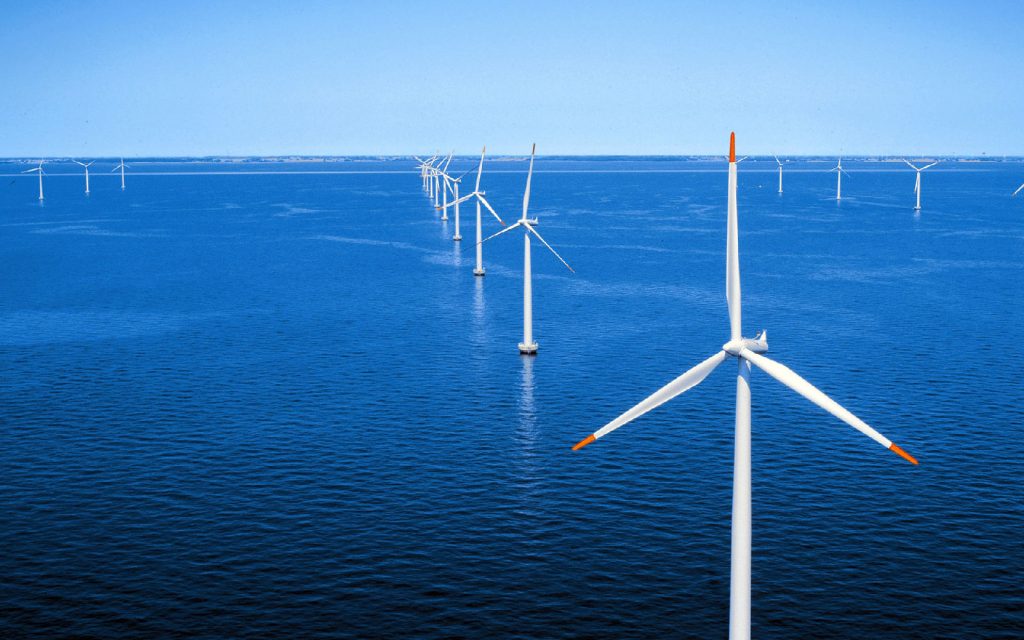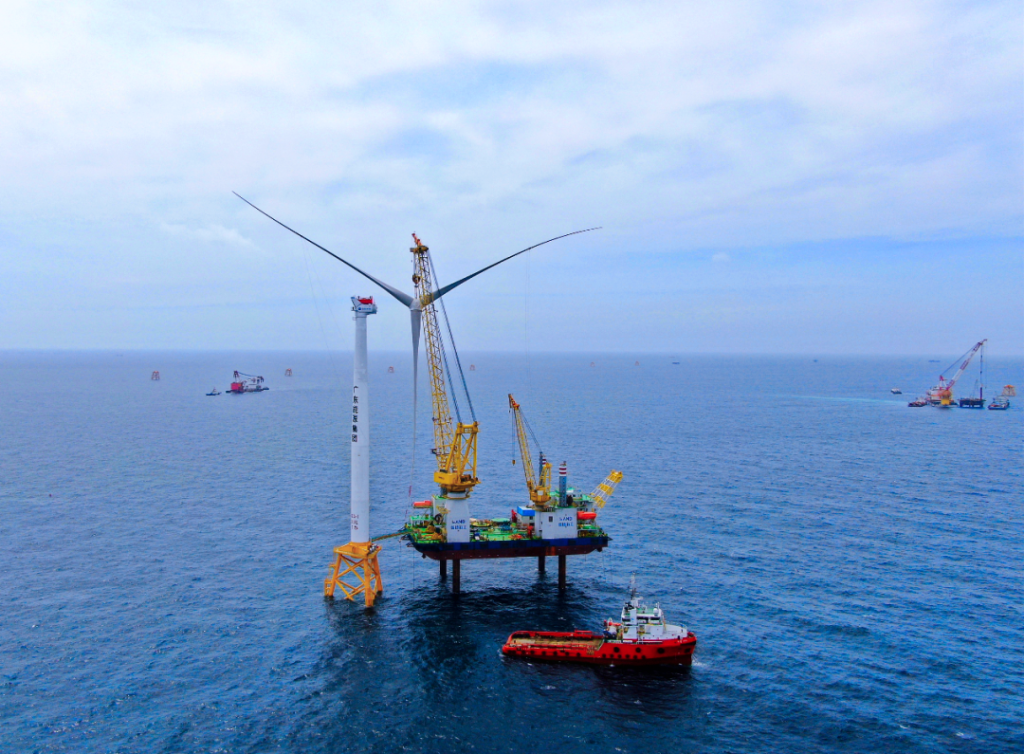DemoSATH, the floating offshore wind project led by Spanish engineering company Saitec Offshore Technologies in cooperation with German energy company RWE Offshore Wind and Japan’s Kansai Electric Power, has reached an important milestone as it begins to generate electricity. This is another important application of wind offshore cable in this project.
Wind power cables: the “nerves in the veins” of wind turbines
Wind energy is the kinetic energy generated by the movement of air.
Wind power energy has a large amount of reserves, which is 10 times more than water energy, and is widely distributed and never exhausted.
So the most common use of wind energy in the form of wind power generation that is wind power, the use of wind power generation can greatly save non-renewable resources, thereby improving the conversion rate of renewable energy utilization.
Wind power is a new pollution-free clean energy, compared with coal and hydropower, the capacity of wind energy doubles every time, and the cost of wind power decreased by 15%, a significant advantage.
Forms of Wind Power Offshore Cable Generation
Initially, most of the most common wind power generation is onshore power generation, usually in open flat areas. In recent years, with the continuous development of wind energy technology, offshore wind power has also set off a wave.
However, the technical requirements of offshore wind power are more complex than onshore wind power.
This is because the harsh natural and environmental conditions at sea lead to constraints such as salt spray corrosion, wave loading, sea ice impingement, and typhoon damage.

In August this year, DemoSATH was installed offshore at the BiMEP test area in Armintza, Basque Country. Subsequently, the connection of the existing static submarine cables to the motion-absorbing dynamic cables and the platform’s bow turret was completed.
This result enables the electricity generated to be transmitted to the grid through the BiMEP substation, converting wind power into a clean, renewable energy source.
To utilize wind power for electricity generation, wind power offshore cables were created.
Wind energy cables are also known as wind power cables.
Due to the special and dangerous nature of wind power generation, wind power cables have extremely high requirements and safety standards in terms of laying, materials, and performance.
Characteristics of Wind Energy Cables
This type of cable should not only meet the performance of ordinary cables but also have the following higher characteristics:
Flexible and Frequent Twisting
Adapt to the wind generator’s automatic yaw to the wind
Superior Vertical Tensile Strength
Offshore cable adapts to the wind turbine vertical suspension laying
Acid and Alkali Salt Spray Corrosion Resistance
I.e. resistant to seawater corrosion.
Adapted to the electrical connection of offshore wind turbines.
As most regions of the world are rich in wind resources, there are more wind turbines installed in these areas.
When the climate is colder and the temperature difference between day and night is greater, wind power cables also need to have a very high resistance to cold.
Wind power cables are required to meet the requirements of the long service life of the wind turbine, the wind turbine is constantly twisting and has other characteristics.
ZMS wind power cables have a good torsion-resistant structural design, high mechanical strength, vibration resistance, oil resistance, hydrochloric acid corrosion resistance, and many other properties, and can be long-term operation in the sea, free suspension laying.
The DemoSATH platform is located two miles off the Basque coast and its turbines are capable of generating up to 2 MW of renewable energy.
Its annual power generation is equivalent to the annual electricity consumption of about 2,000 Spanish households.
Thanks to this project, floating offshore wind technology has been introduced as a new renewable energy generation technology in the Spanish energy mix.

Structure of Offshore Energy Cables
Blade lightning cables
Cables for pitch systems
Cables for fixed laying in the tower
Wires from the tower to the substation
Cables from box transformer to booster station
The pitch system is the main braking system of the wind turbine and places high demands on the cable system.
Whether it is a highly reliable connector or a cable that is resistant to harsh environments such as salt spray.
The ZMS is a fully automatic two-end crimping machine that inserts the connector and the terminal block, which is equipped with torque-controlled motorized screws.
Machine is designed for electrical control cabinets for renewable energy sources such as wind, solar, and energy storage.
This offshore wind power commissioning marks the beginning of a two-year operating period.
The purpose of the operational period is to collect data on the behavior of the SATH technology developed by Saitec Offshore Technologies and to monitor the system installed on the platform to understand its interaction with the surrounding ecosystem.
About Wind Offshore Cables
Offshore wind power cables belong to a group of power cables whose main application scenario is offshore wind power generation systems.
Compared with land cables, wind power offshore cables also have higher requirements for water resistance and mechanical properties.
While land cables are mainly used on land, the application environment is simpler and more stable.
According to the different voltage levels, power cables can be divided into low-voltage, medium-voltage, high-voltage, ultra-high voltage, and other different levels. The voltage level is a direct reflection of the high and low levels of product manufacturing technology.
The higher the voltage level, process equipment, and technical level requirements are relatively higher.
Wind power cable voltage level is generally between 35KV-220KV, for example, in the world widely used 35KV cable for offshore wind power array cable.
